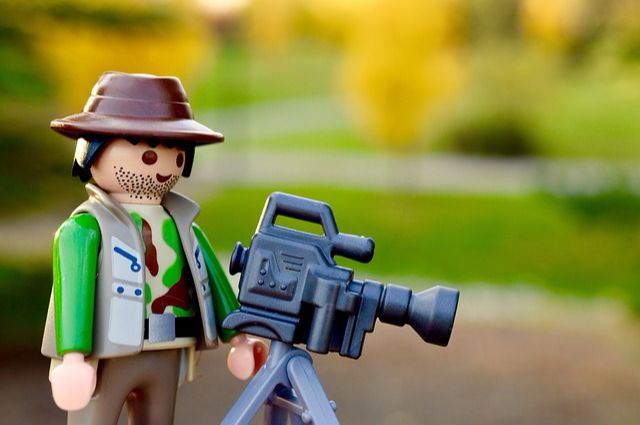Women in Engineering
- Prateek Gautam
- March 21, 2018
- 0 Comments
- 0 Likes
- 1743 Views

Every engineering campus has a standing joke about the lack of women on campus, isn’t it? So where do women engineers look for role models? Well, that’s what this story is for.
Ladies, here are the first few women who kicked ass in the field of engineering. And this is just a drop in the ocean - there have been thousands of role models since then. And Gentlemen, next time you make a joke about women and engineering, remember that you’re coming across as an uninformed idiot. Enough said. Read on.
Emily Warren Roebling:
Roebling was responsible for the construction of one of the oldest roadway bridges in the United States, i.e., the Brooklyn Bridge.
Though designed by John Augustus Roebling, and officially constructed under his son Washington Roebling, Emily was critical in the completion of the project, after her husband, Washington, was bedridden shortly after ground was broken for Brooklyn tower foundation in 1870, because of a paralyzing injury as a result of "caisson disease”. Emily stepped up as the “first woman field engineer”, and spent the next 11 years assisting Washington Roebling, helping to supervise the bridge's construction, and see to its completion in 1883, developing an extensive knowledge of strength of materials, stress analysis, cable construction, and calculating catenary curves through Washington's teachings.
Edith Clarke:
In 1918, Edith Clarke became the first woman to earn an M.S. in electrical engineering from MIT, and the first female professor of electrical engineering at the University of Texas at Austin. She wrote Circuit Analysis of A-C Power Systems.
Clarke went to work for General Electric as a supervisor of computers in the Turbine Engineering department. She invented the Clarke Calculator in 1921- a graphical device to solve equations involving electric current, voltage and impedance in power transmission lines. It could solve line equations involving hyperbolic functions ten times faster than any device then available.
She was also the first woman to deliver a paper at the American Institute of Electrical Engineers’ annual meeting.
Margaret Hamilton:
The Apollo moon landing was a historic landmark in the history of humanity itself, and though we all know of Neil Armstrong, little is known about the woman who wrote the onboard flight software for Apollo space programme.
Also credited with coining the term “software engineering”, Hamilton leaned towards computer sciences when, at the time, it wasn’t even a proper discipline, and programmers had to learn on the job with hands-on experience.
She also developed software for computers to predict weather at MIT and was the director of the MIT Instrumentation Library.
She also worked on the SAGE (Semi-Automatic Ground environment) project- a system of large computers and associated networking equipment that compiled data from numerous radar sites to produce an image of airspace over a wide area. She was one of the programmers who wrote the software for detection of unfriendly aircraft.
Hamilton has published over 130 papers.
Stephanie Kwolek:
Men in a battlefield is a common notion, but little is known of women keeping them safe.
Stephanie Kwolek invented poly-para phenylene tetraphthalamide, the first family of synthetic fibres of unprecedented strength and hardness, also known as Kevlar.
Ironically, Kwolek was only offered a position at DuPont, where she invented Kevlar, because of the shortage of men as they were overseas at the time of World War II.
Initially wanting to be a doctor, Kwolek intended to work for DuPont temporarily, so that she could manage fees for her medical school. However, she stayed after she found the work interesting.
Kwolek was awarded the DuPont’s Lavoisier Medal for outstanding technical achievement for her invention of Kevlar.
Hedy Lamarr:
Yes, you read that right. Hedy Lamarr- the actress.
She was responsible for the invention of one of the most crucial things in our day-to-day lives, “Wi-Fi”, something you can’t imagine your life without.
However, it started out as a radio guidance system for Allied torpedoes in World War II, where Lamarr along with composer George Antheil used spread spectrum and frequency hopping technology to defeat the threat of jamming by Axis powers. The principle, although initially rejected by US Navy until the 1960s, was incorporated into Bluetooth technology, and is similar to methods used in legacy versions of CDMA, and, you guessed it, Wi-Fi.
She was inducted into the National Inventors Hall of Fame in 2014 for her work.
Prateek Gautam
22 |
Manipal, Karnataka, India |
Second year, Bachelor of Pharmacy |
Content Creator intern at Konversations |
Certified web developer |
-
![]()
How YouTube Paid For My Pocket Money
January 25, 2018
-
![]()
How I Pursued My Passion For Film-Making
January 26, 2018
-
![]()
15 Tips For a Great Engineering Resume
February 02, 2018



 ALL COURSES
ALL COURSES  COMMUNITY
COMMUNITY  LIVE CHATS
LIVE CHATS  EXPERTS
EXPERTS  MY CERTIFICATES
MY CERTIFICATES  ABOUT
ABOUT  SUPPORT
SUPPORT
Comments (0)
*Some Comments would not be shown if marked as Spam